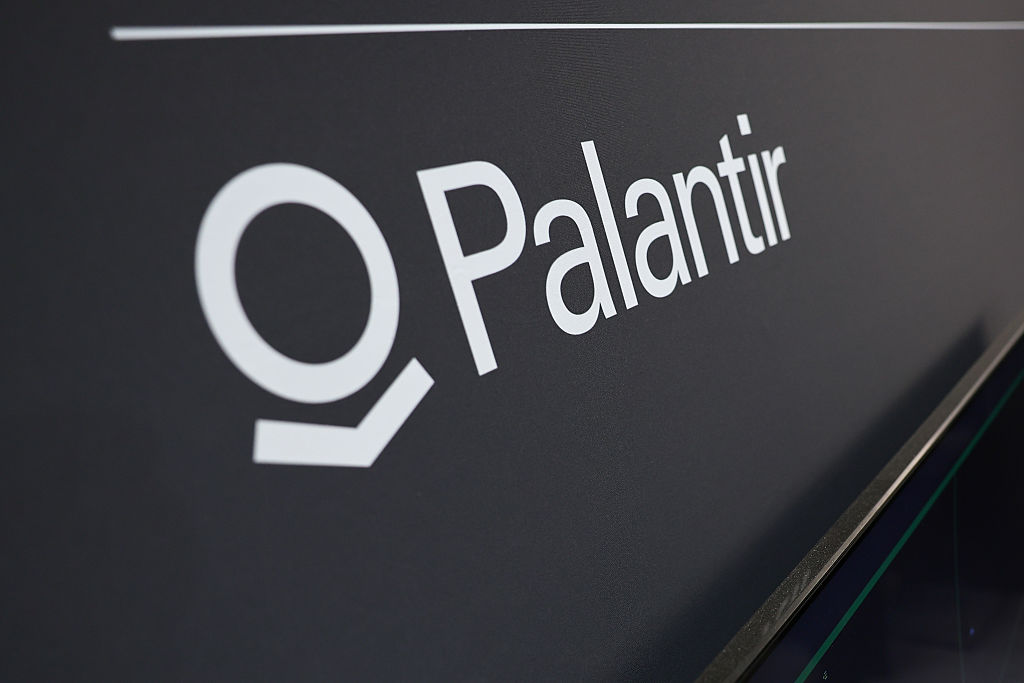I Bought Palantir When It Was Trading at $8. Now It's $180, and I've Made $1 Million. What Do I Do?
What do you do with all that appreciated Palantir stock? We asked a financial expert for advice.


Question: I bought Palantir Technologies (PLTR) stock when it was trading at $8. It's now at $180, and I've made $1 million. What should I do?
Answer: Nicely done!
Palantir is one of the greatest investing success stories of our lifetime. Since going public in 2020, its shares are up almost 1,800% — a massive return. It's one of the best-performing stocks in 2025 and now sports a market cap close to half a trillion dollars.
From just $107.88 $24.99 for Kiplinger Personal Finance
Be a smarter, better informed investor.

Sign up for Kiplinger’s Free Newsletters
Profit and prosper with the best of expert advice on investing, taxes, retirement, personal finance and more - straight to your e-mail.
Profit and prosper with the best of expert advice - straight to your e-mail.
Once a low-profile number cruncher for the military and intelligence services, the company has now positioned itself as the Pentagon's nerve center for artificial intelligence (AI) and as a major player in business analytics.
The problem of the modern era isn't a lack of information. It's quite literally the opposite. We're drowning in data that can be hard to structure and interpret. That's where Palantir steps in. It makes big data digestible and usable for decision-making.
None of this is likely to change soon, and Palantir remains the top dog in this space.
But after such an epic run, what should you do? Do you take your profits on this surging tech stock and look for the next opportunity, or do you keep riding this trend as far as it goes?
Let's go through a few scenarios and discuss the pros and cons of each.
Don't get greedy
There's an old maxim on Wall Street: Bulls make money, bears make money, but pigs get slaughtered. Having a disproportionate share of your portfolio in any single stock — even a revolutionary one such as Palantir — is risky.
A free-market economy is naturally disruptive, and this is even more true in the tech sector. Today's cutting-edge leader is tomorrow's tech dinosaur.
International Business Machines (IBM), Intel (INTC), Cisco Systems (CSCO), Dell Technologies (DELL) … all these companies were major innovators and indispensable to the tech economies of their day.
They all traded at massive premiums to the broader market. None maintain the same relevance today, and not a single one of these tech stocks warrants a high earnings or sales multiple.
Palantir, meanwhile, trades for 588 times earnings and 130 times sales. Those numbers are so high that they look like typos. To put them in perspective, the S&P 500 is expensive by historical standards and yet trades at a price-to-earnings (P/E) ratio of "only" 31. Its price-to-sales ratio is 3.4.
A company enjoying Palantir's growth rates should trade at a premium valuation, of course. But there's premium … then there's delusion. This would seem to fall into the latter category.
Selling your Palantir position, or at least trimming it little by little, could be smart risk management.
There are two downsides to selling, of course. The first is that you miss out on additional upside if the stock continues rising. The second is the potential tax hit.
Assuming a cost basis of close to nothing, a $1 million profit in Palantir would mean paying something in the ballpark of $200,000 in capital gains taxes.
This brings us to a second option.
Hold on to PLTR stock for dear life
You've done fantastically well by simply holding on to your Palantir position this long. The path of least resistance — and the least exposure to capital gains taxes — is just to keep holding.
There are legitimate reasons you might want to simply hold on, apart from tax avoidance.
Palantir is the leader in AI analytics. Its earnings per share nearly doubled in 2024 and are expected to grow by 56% this year and 33% next year. Why wouldn't you want to maintain outsize exposure to this successful stock?
Any trader will tell you that the secret to really making money in the market is to cut your losers early, and let your winners run.
That's legitimate, but you need to have some risk management in place if the AI bubble bursts.
One option could be to use a series of stop losses. You could instruct your broker to sell off, say, 20% of your position at a certain pain point, such as a 10% to 15% decline in the share price. You could have a second sell order in place to unload another 20% of your position if the share price drops even further.
This doesn't eliminate your tax liability, of course. You'd still be on the hook for capital gains taxes on any shares you sold for a profit. But you'd potentially be spreading gains over a couple of years.
If things got really bad — such as in a repeat of the 2000-2002 tech bust — you'd be better off paying the taxes rather than watching years of gains go down the tube.
What other options do I have?
You have other options.
If you regularly give to your church or a favorite charity, consider donating appreciated stock instead of cash. Because most nonprofits are tax-exempt, they can sell the stock without paying capital-gains taxes — and you still receive a charitable deduction for the full fair-market value of the gift.
If you're willing to get a little creative, there are also more sophisticated ways to diversify a concentrated portfolio without triggering a large tax bill. Firms such as AQR Capital Management, Nuveen and other specialized managers offer leveraged long/short strategies designed to intentionally realize losses that can offset existing capital gains.
In broad terms, these managers run aggressive long/short portfolios — buying stocks expected to rise and shorting those likely to fall. Naturally, there will be both winners and losers, but the manager selectively realizes the losing positions. The realized losses then provide tax offsets, allowing you to gradually unwind a large position over several years without being hit with a single, massive tax bill.
Of course, this doesn't eliminate taxes; it merely defers them. That's often acceptable, especially if your long-term goal is to leave the portfolio to your heirs, who would receive a stepped-up cost basis upon your death. In that case, those deferred gains could effectively disappear altogether.
Because these strategies involve leverage and short selling, they carry additional risks and complexities. It's essential to consult a qualified tax or investment professional before proceeding.
Finally, keep perspective: Having a large, appreciated stock position is a high-quality problem. It can create tax challenges, yes. But having taxes to pay at least means that you made money.
Related content
Profit and prosper with the best of Kiplinger's advice on investing, taxes, retirement, personal finance and much more. Delivered daily. Enter your email in the box and click Sign Me Up.

Charles Lewis Sizemore, CFA is the Chief Investment Officer of Sizemore Capital Management LLC, a registered investment advisor based in Dallas, Texas, where he specializes in dividend-focused portfolios and in building alternative allocations with minimal correlation to the stock market.
-
 Tariffs, Inflation, Uncertainty, Oh My: How to Feel Less Stressed About Finances Now, Really
Tariffs, Inflation, Uncertainty, Oh My: How to Feel Less Stressed About Finances Now, ReallyTariffs, high prices and an uncertain economy getting you down? These steps can help.
-
 IRS Updates Capital Gains Tax Thresholds for 2026: Here’s What’s New
IRS Updates Capital Gains Tax Thresholds for 2026: Here’s What’s NewCapital Gains The IRS has increased the capital gains tax income thresholds for 2026. You'll need this information to help minimize your tax burden.
-
 Tariffs, Inflation, Uncertainty, Oh My: How to Feel Less Stressed About Finances Now
Tariffs, Inflation, Uncertainty, Oh My: How to Feel Less Stressed About Finances NowTariffs, high prices and an uncertain economy getting you down? These steps can help.
-
 Your Estate Plan Isn't 'Done' Until You've Completed These Five Steps, From an Estate Planning Attorney
Your Estate Plan Isn't 'Done' Until You've Completed These Five Steps, From an Estate Planning AttorneyCongratulations on getting your estate plan in order. Now, you need to communicate the relevant details to ensure your plan is effectively carried out.
-
 A Nightmare for Parents: How to Navigate the Legal Boundaries of Tenant Rights During a Family Crisis
A Nightmare for Parents: How to Navigate the Legal Boundaries of Tenant Rights During a Family CrisisThis family's story illustrates how important it is to get help sooner rather than later and highlights the complexities of tenant rights and legal protections.
-
 Amazon Surge Sends S&P 500, Nasdaq Higher to Start November: Stock Market Today
Amazon Surge Sends S&P 500, Nasdaq Higher to Start November: Stock Market TodayAmazon inked a $38 billion cloud deal with OpenAI, which sent the stock to the top of the Dow Jones on Monday.
-
 If You'd Put $1,000 Into Home Depot Stock 20 Years Ago, Here's What You'd Have Today
If You'd Put $1,000 Into Home Depot Stock 20 Years Ago, Here's What You'd Have TodayHome Depot stock has been a buy-and-hold banger for truly long-term investors.
-
 Eight Steps to Help Get You Through the Open Enrollment Jungle at Work
Eight Steps to Help Get You Through the Open Enrollment Jungle at WorkWondering how to survive open enrollment this year? Arm yourself with these tools to cut through the process and get the best workplace benefits for you.
-
 Seven Moves for High-Net-Worth People to Make Before End of 2025, From a Financial Planner
Seven Moves for High-Net-Worth People to Make Before End of 2025, From a Financial PlannerIt's time to focus on how they can potentially reduce their taxes, align their finances with family goals and build their financial confidence for the new year.
-
 I'm a Financial Planner: These Are the Seven Tiers of Retirement Well-Being
I'm a Financial Planner: These Are the Seven Tiers of Retirement Well-BeingLet's apply Maslow's hierarchy of needs to financial planning to create a guide for ranking financial priorities.